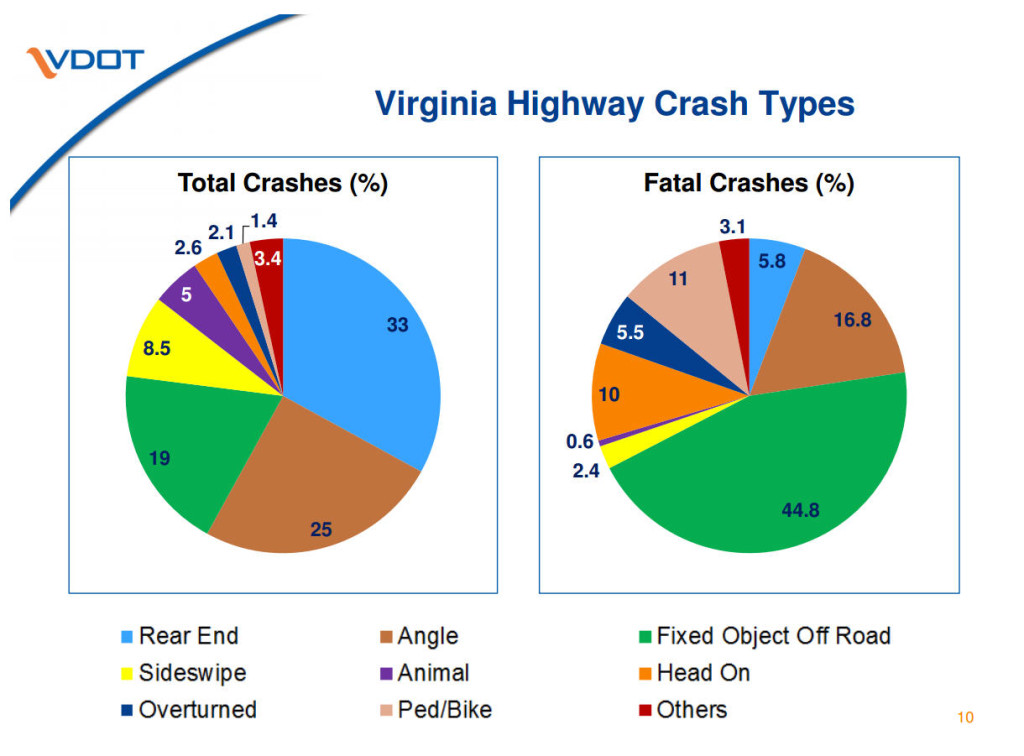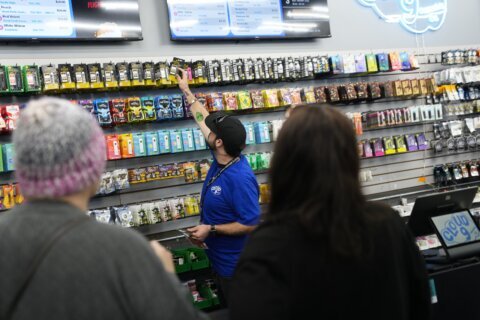WASHINGTON — Every four minutes, there is a crash on Virginia roads. Every eight minutes, there is a crash where someone gets hurt. And Virginia Department of Transportation data show about two people a day are killed – a number that is trending slightly higher this year than last. So the agency is moving forward with relatively cheap changes, including some that are already making Northern Virginia roads much safer.
Assistant State Traffic Engineer Mark Cole, with VDOT’s Highway Safety Program, said the projects include rumble strips marking the middle or edge of a road, brighter more visible traffic lights, new flashing yellow left turn arrows and better signs or other changes around curves.
He said a “road diet” in Reston that added bike lanes and narrowed some car lanes has cut crashes on Soapstone Drive by two-thirds.
“If we did work replacing curve signage and markings at about 2,600 curves, we could see a 30 to 50 percent crash reduction in those areas, which equates to about 18 lives a year and 150 serious injuries a year that could be reduced,” Cole said.
Cole said state data show that one in three crashes in Virginia overall are congestion-related rear-end collisions. The data show a quarter of crashes involve cars heading in different directions colliding at intersections, and about one in five crashes involves a car leaving the road and hitting something like a tree.
“An investment of an additional 1,900 miles of rumble strip is estimated to reduce about 40 to 60 percent of our roadway departure crashes,” Cole said. It is projected to save about 12 lives and prevent 400 injuries each year.

Even though those “fixed object off road” crashes are only 19 percent of statewide crashes, they account for more than 44 percent of fatal crashes.
While the overall number of crashes has been relatively steady over the last five years, the number of road deaths has been generally falling since a peak of 1,026 deaths in 2007. Cole said that after 700 deaths on Virginia roads last year, the number is on track to be slightly higher this year.
“We often remind ourselves that behind every one of those numbers and statistics, we have the face of a family member or a friend that’s travelling our roadways,” he said.
About 66,000 people are injured every year on Virginia roads, the same as the attendance at a sold-out Virginia Tech football game.
Even changes that involve no construction, like adjusting the timing of traffic lights to make trips smoother, can also prevent costly crashes.
“By simply adjusting the signal timing, bringing it up to current standard and current conditions of an intersection, you can see a significant reduction … of up to a third of intersection crashes,” Cole said.
VDOT has deployed 113 highway safety-funded projects since 2004, with another 199 currently in the process of being designed or completed. The locations where they have been implemented saw fatal crashes drop 92 percent, and crashes causing injuries drop by 55 percent.
Many of the safety changes are funded through the federal government.







